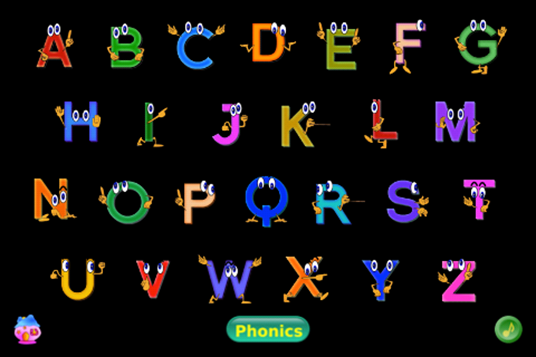Many parents may have heard that the
Ministry of Education would conduct the test of “phonics” in schools this year.
However, a lot of parents are still confused about the real concept of
“phonics”
A person knows how to read when he or she
uses all basic involved skills. When they read, they often tend to predict
following words. That’s why you find it’s hard to review the text written by
yourself because you usually read words you think first, not the exact words
you wrote. A proof for this phenomenon is the way children read stories they
used to know or text with the familiar content. At this time, kids will “read”
a version of their own stories by looking at pictures and reporting what they
used to hear though it’s not really “reading” as the mere meaning but it
composes of natural skill of each child.
Children’s books with pictures gradually
create a familiar world view, for example, when they look at pictures of the
beach, they will guess that words such as “sand” and “sea” will appear in the
lesson. In addition, they can position the world through shapes they can feel.
For instance, although they don’t know letters and words, they know “sand” and
“sea” written in different ways. “Guessing” and “recognizing”, “right” and
“wrong” words is also shown in case you are not sure about the spelling of a
word, and you write down some spelling version of that word to confirm what is
correct.

However, to read and write in the right
spelling, we need the knowledge and skill about “phonics”. It should be noted
that when you are so familiar with something, it’s hard for you to teach to
others about it, as you know how to ride a bicycle and do it like “errands” but
teaching it for a kid who drive the bike at the first time is more difficult
than ever. Similar to pronounce, even though you are good at reading and
skills, it’s not sure that you can identify and teach your children those things.
Please notice that “phonics” is relate to
“reading” but “pronouncing” is in relation with “getting it loud”. For those
who are proficient in reading, two concepts may be the same but to do it
basically, you need to know this difference. We might not know about “phonics”
but most children can learn it easily because they are taught skills of
“reading comprehension” and those who only learn about reading by rote will be
in trouble with “comprehension” and “pronunciation”.
When reading, you will often see the word
“cat”, you look at letters “c”, “a”, “t”, you link sounds of those letters
together (it is called “read connection” in phonics) and you will read the word
“cat”. It’s similar with “splat”, “crumpet”, “splendid” and “criminal”, each
character has its own syllable and when you read them in connection, you can
read them perfectly. In contrast, when we pronounce by spelling, we will
separate each sound of the letter (in phonics it is called “sound split”, in
which each character has a particular sound and this way is usually used when
children begin to learn words.
Nevertheless, there are many complex words
in which a syllable consists of a few letters. For example, both “slop” and
“shop” has four characters but “slop” has four syllables (s-l-o-p) whereas
“shop” has only three (sh-o-p), because the sound “s” and “h” are mixed
together into “sh” sound. Similarly, “glow” has four letters and three
syllables as “o” and “w” become “ow”. It should be noticed that to pronounce
correctly, you need to consider the context and the traditional way of
pronunciation.
Sometimes, some different letters are put
together and they make the same harmony, for example words followed by
different characters have the same way of reading: “school” “shoe”
“through” “threw” “cruise”.
The good news is that though there are many
longer words including complicated and irregular ones, the general rule is
“sound split” and “read connection”. There may be some irregular words but many
studies have demonstrated the effectiveness of application “phonics” for
“comprehension” in schools, and that’s why the government encourages parents to
concentrate on this subject for their kids.
There are some simple ways for parents to
help their children get used to practicing “phonics”:
- Pay much attention to “sounds” than single letters: So far we have
had the habit of teaching children to read parrot-fashion but now, let kids
play small games such as asking them about characters which “help” “black”
“ink” “fish” “tesco” may have. Don’t worry whether they can list characters or
not but focus on helping them recognize “syllables”. Obviously, many parents
will feel hard at first but try to learn with kids. One of the most useful
methods is ignoring the meaning of words. You can even allow your children to
make nonsense words such as “flob” “stenip” “crindestinderban” as their
creativity.
Once children get used to hearing “sounds”,
the process “pronunciation” and “comprehension” will be easier. Let them see
the relationship between the common pronunciation and sound separation of each
character, then let us write down sounds they hear. When you read a book for
them, sometimes emphasize some words with difficult syllables but don’t
distract the story with too much explanation.
- Encourage children to trial and error: They will make many mistakes
when they start to learn how to read. “Boat” is written as “boat” but when they
apply phonics, they are easy to write “b-o-w-t” or “b-o-t-e”. Don’t be angry,
just maintain the relax atmosphere. There will be a large number of children
who are in trouble with reading due to different reasons, but phonics is still
the useful beginner method to help them master the reading skill in the future.